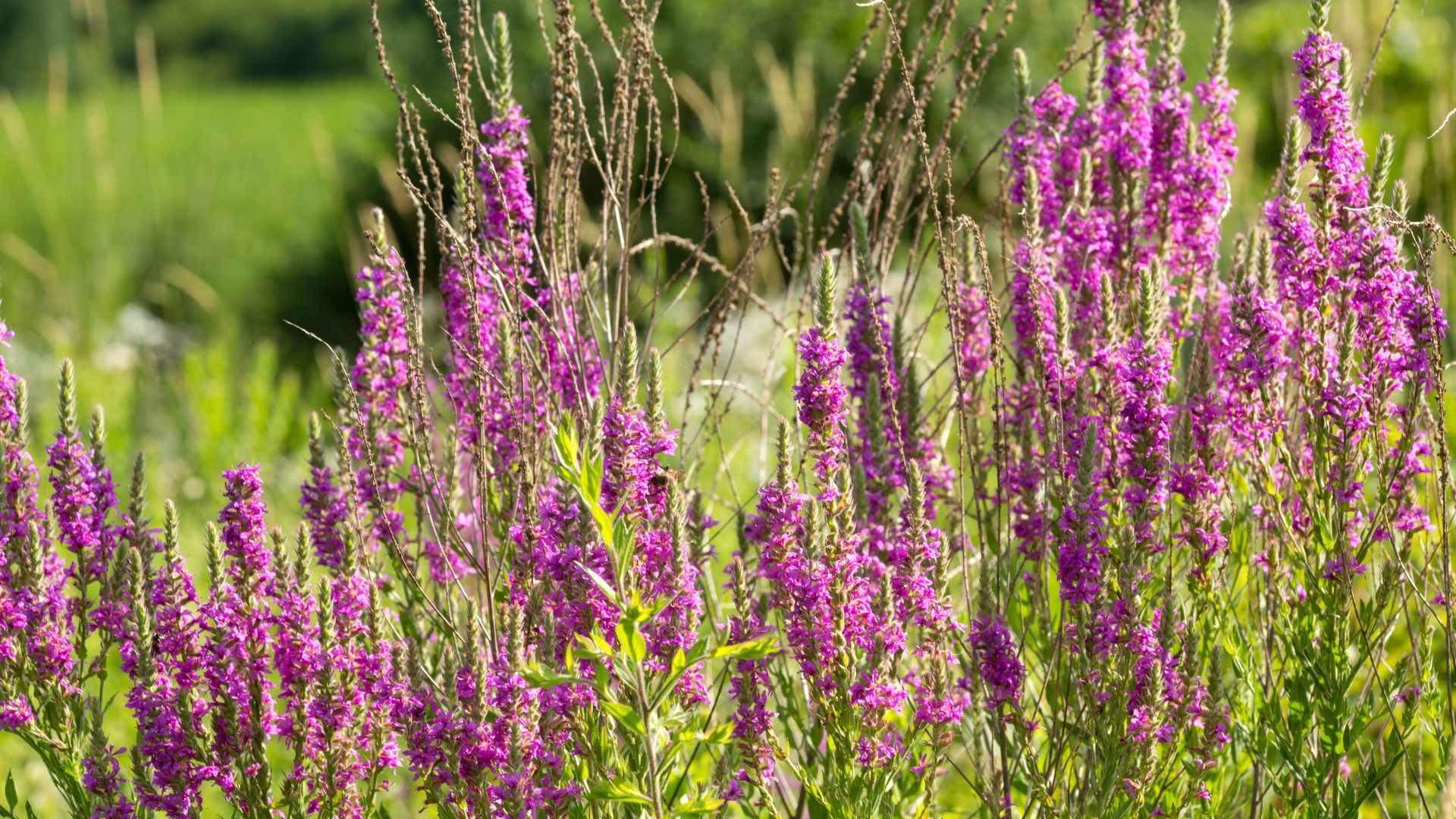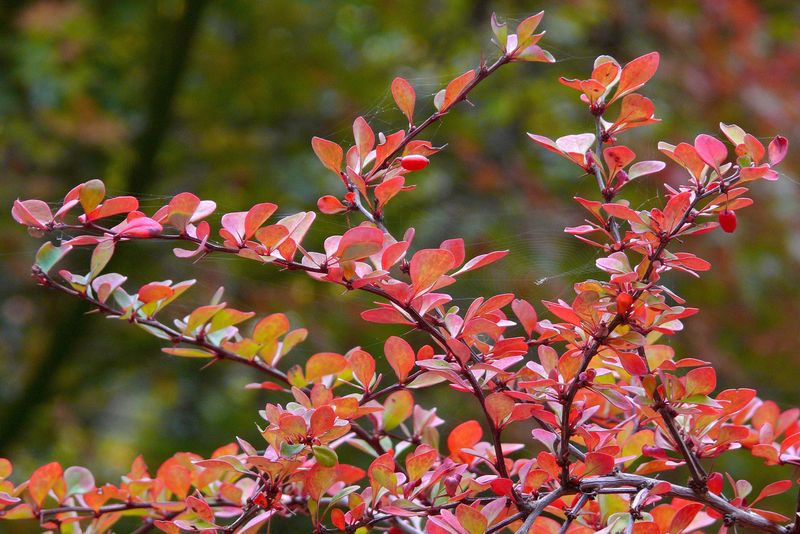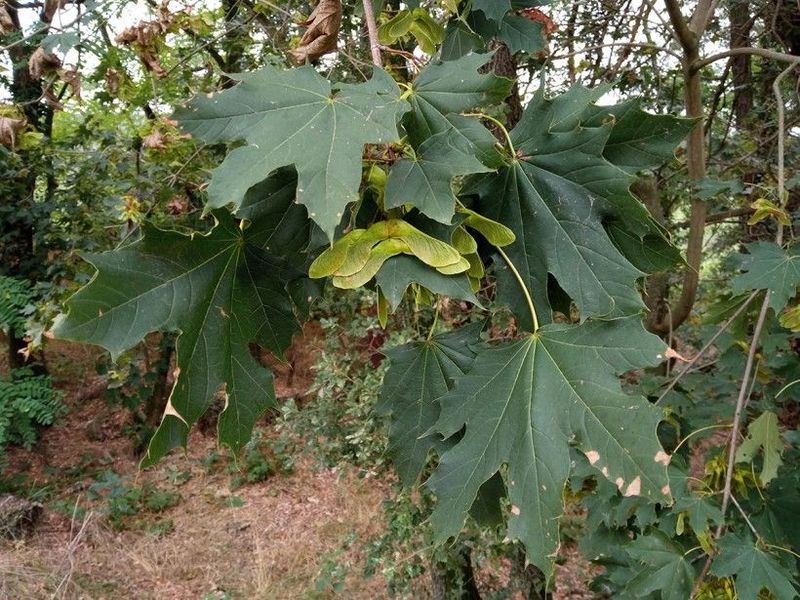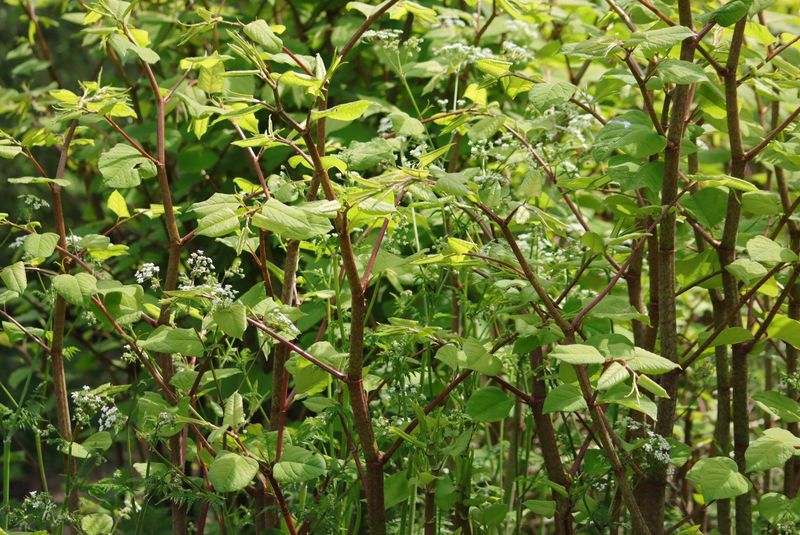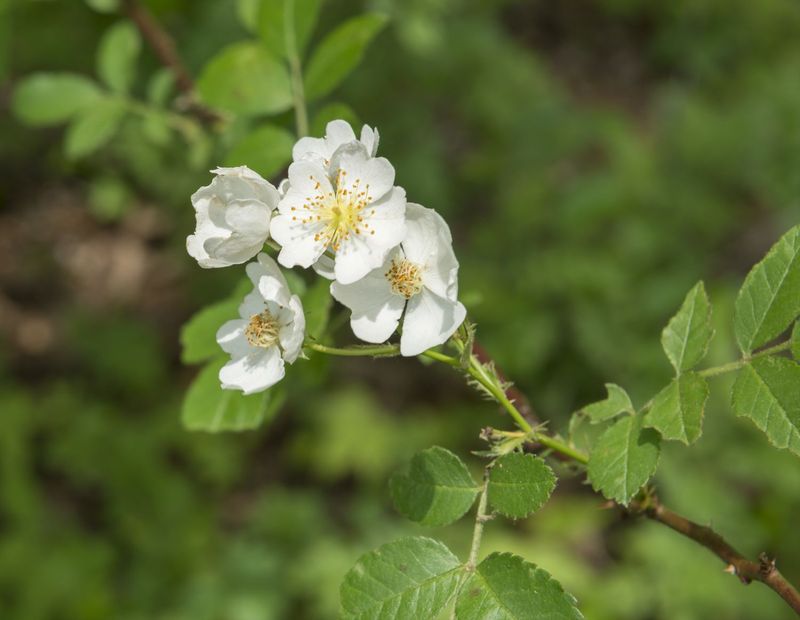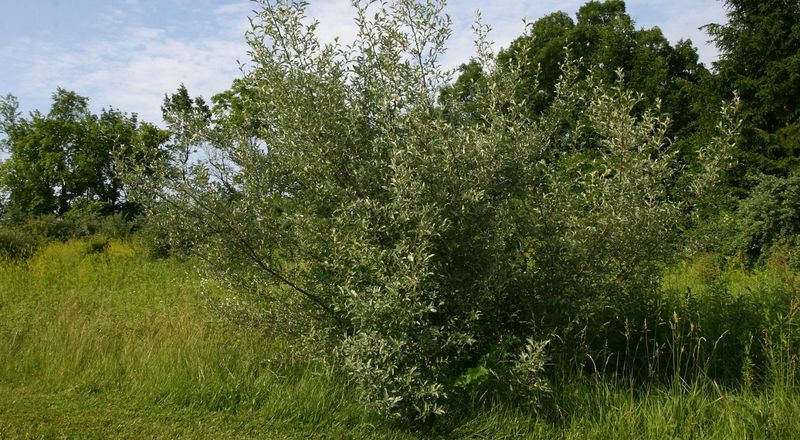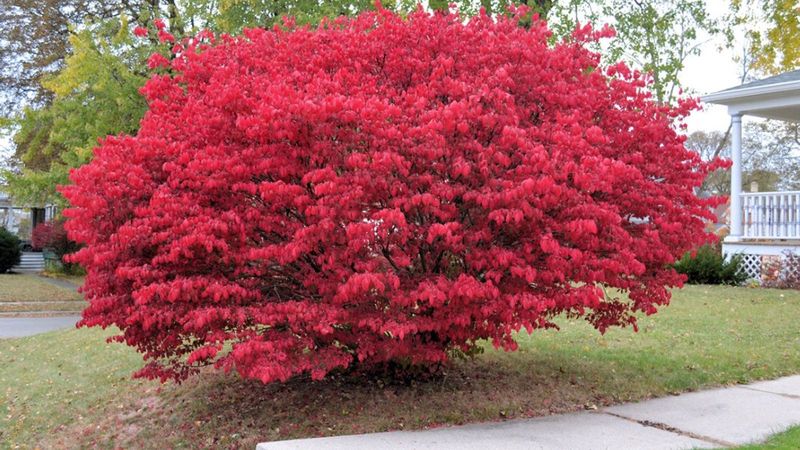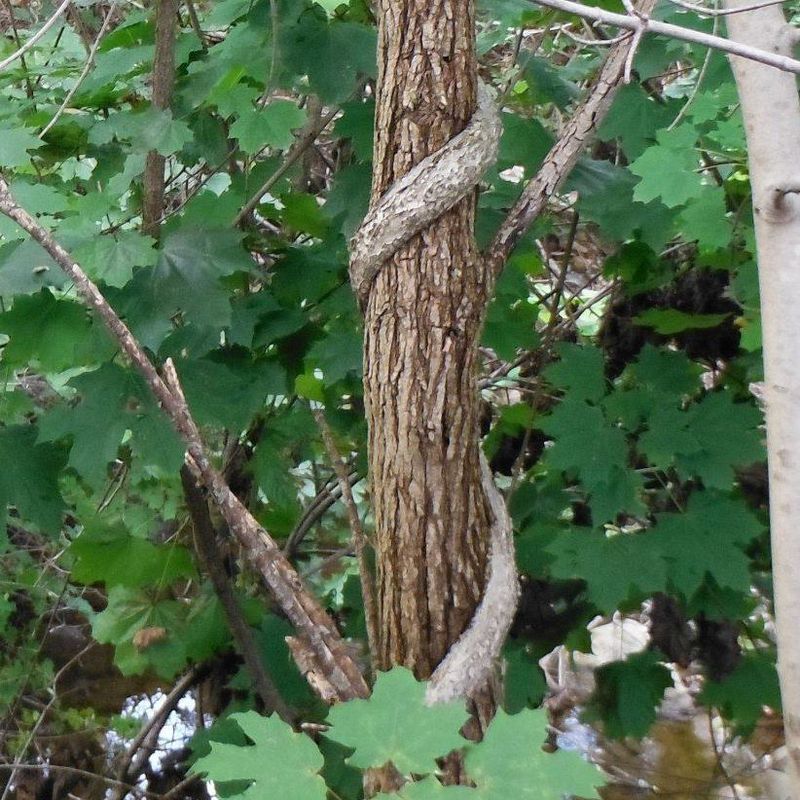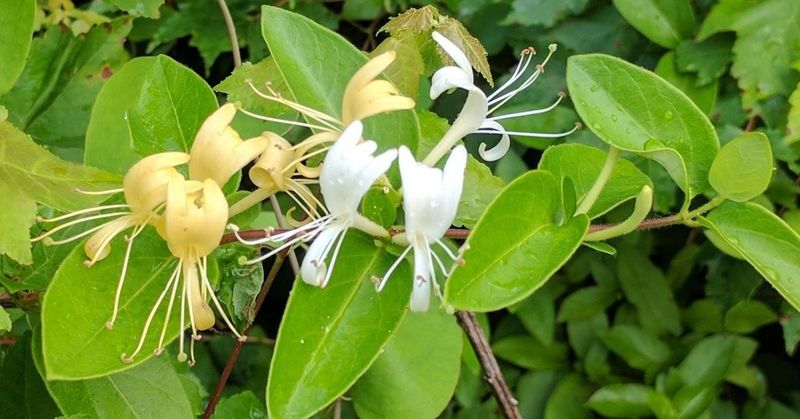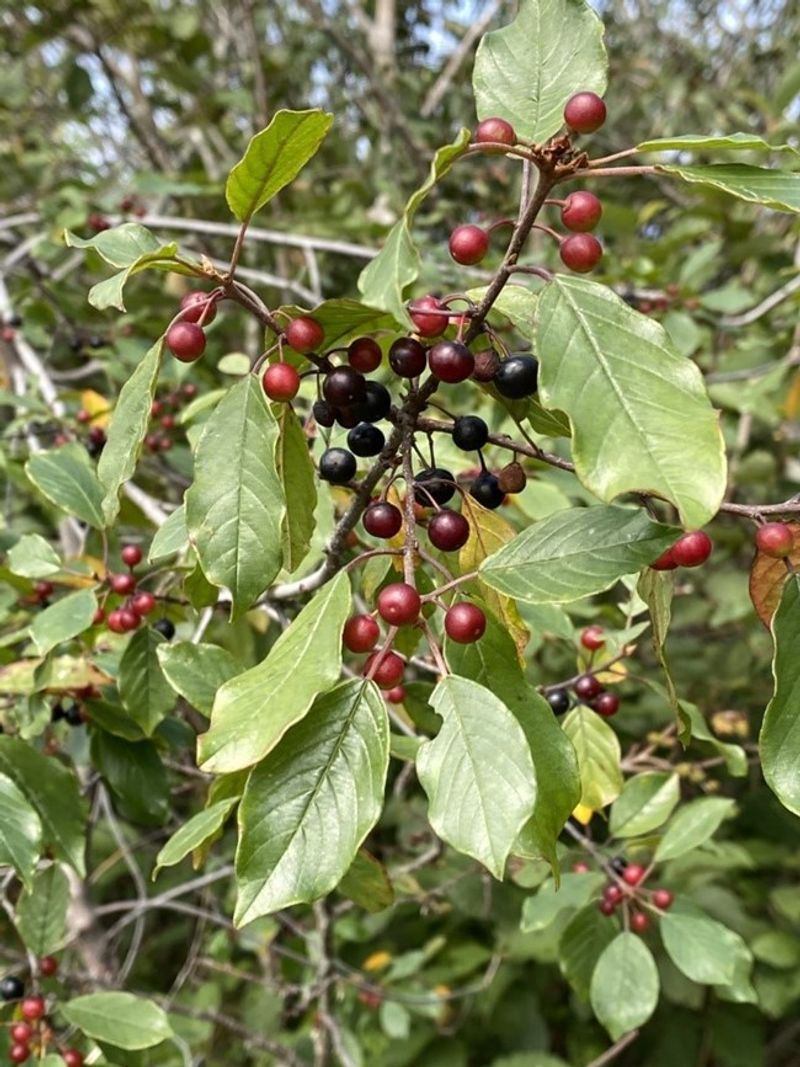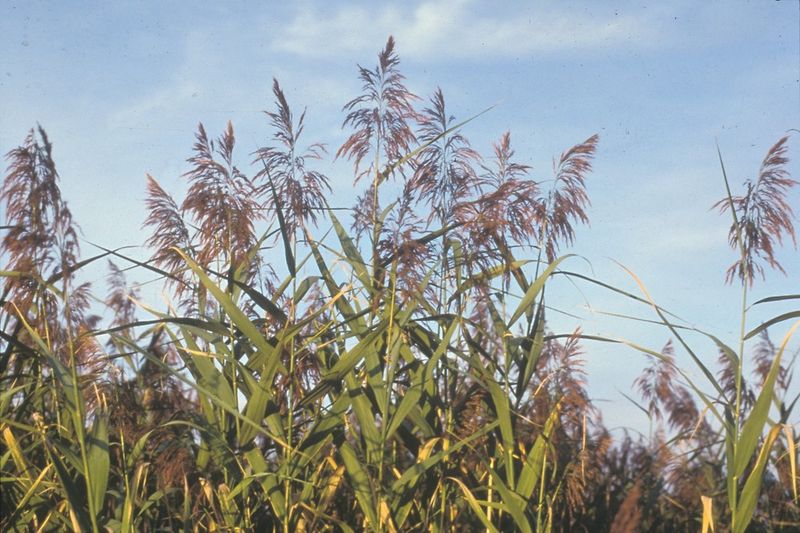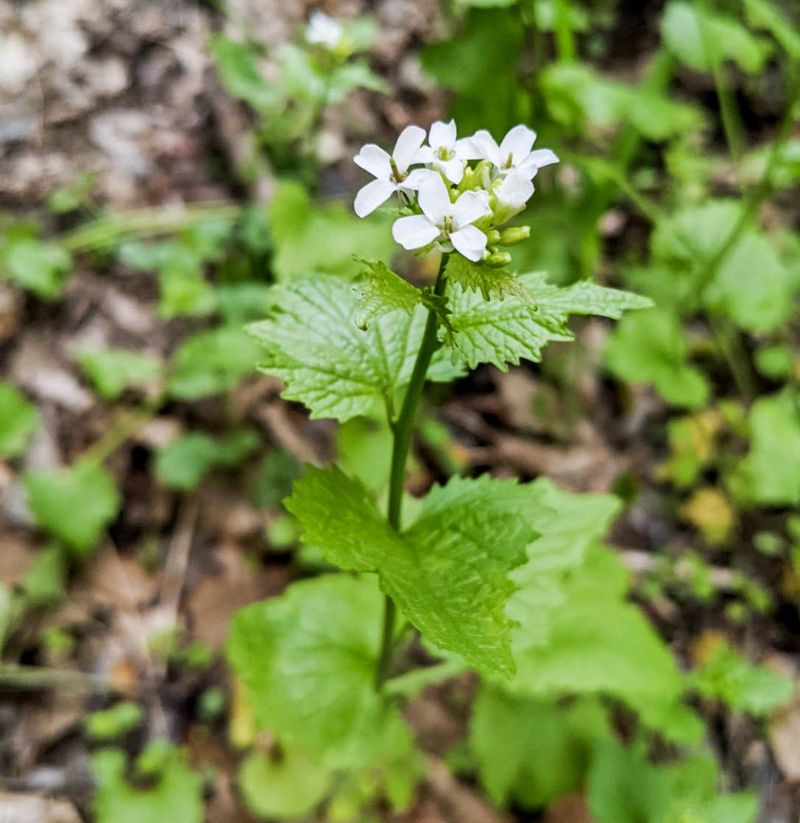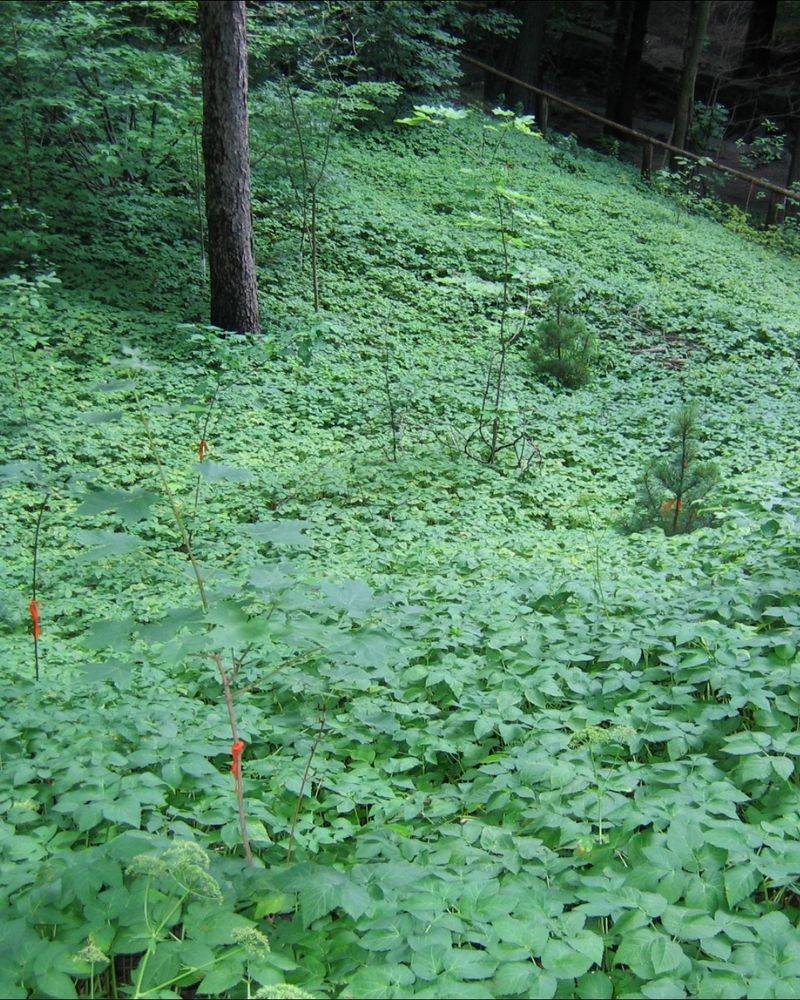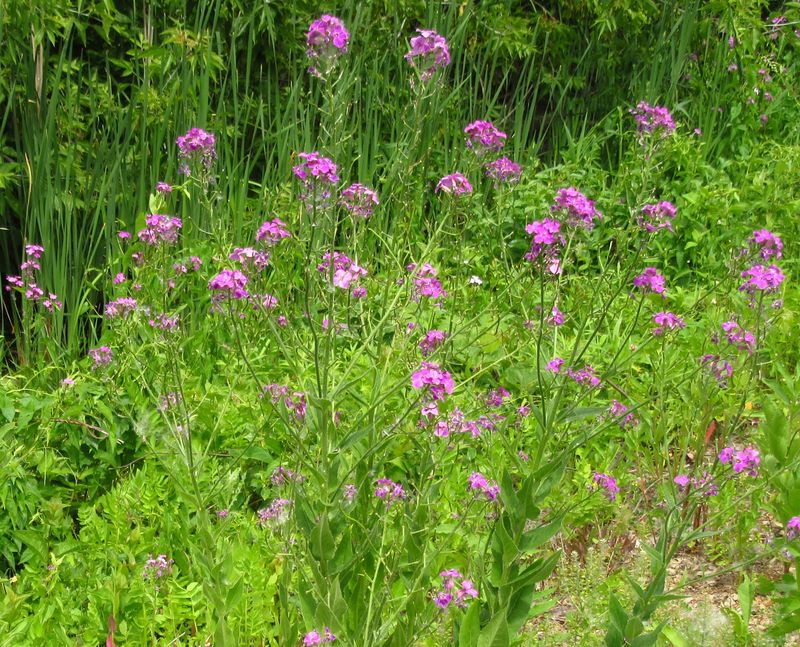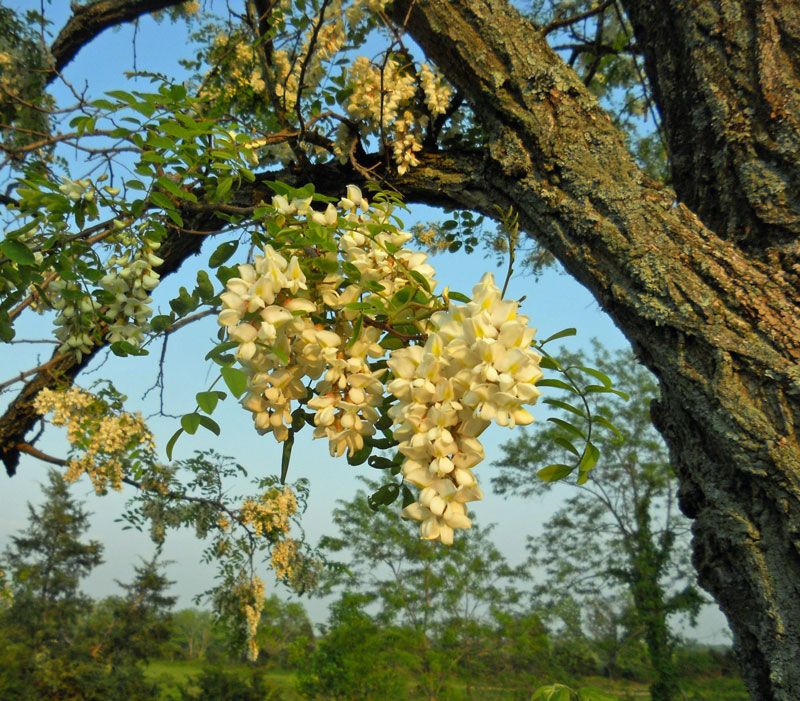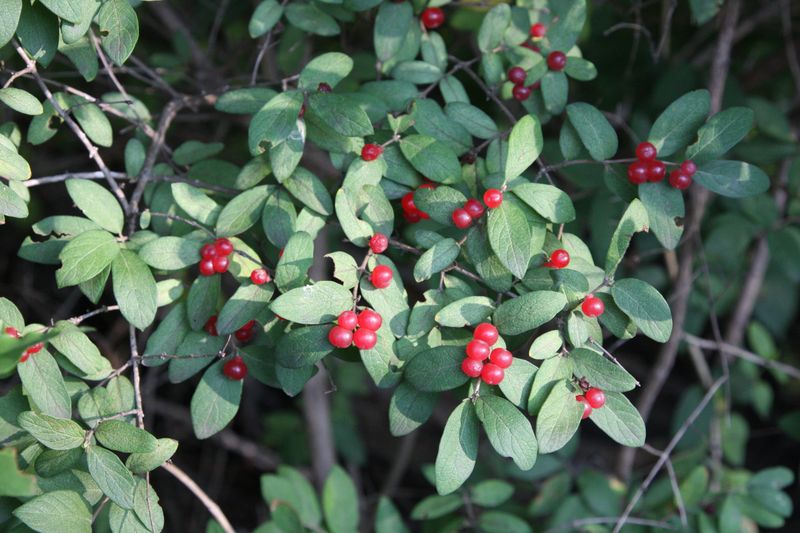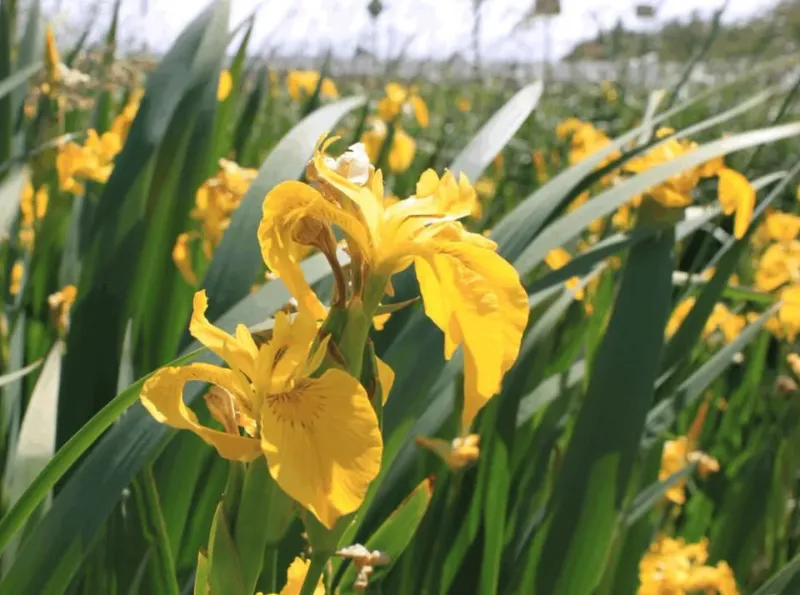Maine’s wild beauty is one of the things that makes living or gardening here so special—but that charm is at risk thanks to some pushy, non-native plants. I’ve seen firsthand how quickly invasive species can take over, choking out native wildflowers and turning once-diverse gardens into a tangled mess.
These plants aren’t just annoying to deal with—they actually upset the balance of local ecosystems, making it harder for native birds, bees, and butterflies to find what they need. Once they’ve settled in, they’re stubborn guests that rarely leave without a fight.
The good news? You can make a real difference by planting native species instead. They’re better adapted to Maine’s climate, easier to care for, and create a haven for local wildlife that’s as rewarding as it is beautiful.
1. Japanese Barberry: The Thorny Invader
Originally brought to America as an ornamental shrub, this thorny bush creates dense thickets that alter soil chemistry and harbor ticks that spread Lyme disease. I’ve seen entire forest understories transformed by this plant in just a few years.
Many Maine gardeners are surprised to learn it’s on the state’s invasive plant list. The berries spread easily by birds, allowing it to escape gardens and invade natural areas rapidly.
Try planting winterberry holly instead. This native shrub offers similar red berries that brighten winter landscapes and provides genuine food for local birds rather than disrupting the ecosystem.
2. Norway Maple: Shade Destroyer
Walking through my neighborhood, I can instantly spot Norway maples by their dense shade that prevents anything from growing underneath. Their shallow roots compete aggressively with other plants for water and nutrients.
The winged seeds spread prolifically, allowing seedlings to pop up everywhere. Many people confuse them with our native sugar maples, but Norway maples have milky sap when leaf stems are broken.
Red maple makes an excellent alternative. This native tree provides gorgeous fall color, supports local wildlife, and won’t create the ecological dead zones that form beneath Norway maples.
3. Purple Loosestrife: Wetland Menace
The tall purple flower spikes might look pretty in summer, but this aggressive plant can transform diverse wetlands into monocultures. After seeing it take over a local marsh, I understand why it’s strictly prohibited in Maine.
Each plant produces millions of seeds annually that spread easily by water, wind, and wildlife. Its extensive root system makes manual removal nearly impossible once established.
Swamp milkweed offers similar purple-pink blooms but supports monarch butterflies and other pollinators instead of destroying habitat. I’ve found it thrives in the same wet conditions without the invasive tendencies.
4. Japanese Knotweed: The Concrete Cracker
Few plants have impressed and terrified me like Japanese knotweed. This bamboo-like plant can grow through concrete, asphalt, and house foundations with its powerful rhizomes. I’ve watched it return year after year despite aggressive cutting.
Knotweed creates dense stands that shade out everything else. Once established, it’s nearly impossible to eradicate without years of persistent effort and sometimes professional help.
Red osier dogwood provides similar height and screening benefits with striking red stems in winter. Unlike knotweed, this native shrub plays well with neighboring plants and supports local wildlife.
5. Multiflora Rose: The Thorny Takeover
Those pretty white flowers in spring give way to an impenetrable thicket that will scratch your arms to pieces. The hooked thorns catch on clothing and skin, making removal a painful process – something I learned the hard way one summer.
Originally planted for erosion control and living fences, multiflora rose quickly escaped cultivation. Birds spread the bright red rose hips, helping it colonize fields, forest edges, and roadsides throughout Maine.
Virginia rose offers similar delicate flowers and wildlife benefits without the aggressive spread. This native rose forms manageable clumps rather than the impenetrable thorny thickets of its invasive cousin.
6. Autumn Olive: Deceptive Beauty
The silvery leaves and fragrant flowers might seem appealing, but don’t be fooled. This shrub fixes nitrogen in soil, changing growing conditions to favor itself over native plants. My neighbor has been battling it for years after birds spread it from a single plant.
Autumn olive produces abundant berries – up to 200,000 per shrub – ensuring widespread dispersal. It leafs out early and holds leaves late, giving it a competitive edge over native species.
Beach plum offers similar silvery foliage and edible fruits that make excellent jams. This native coastal shrub thrives in poor soils without altering the ecosystem or spreading aggressively.
7. Burning Bush: Fall Color Fiasco
The brilliant red fall foliage catches everyone’s eye, which explains why it was planted so widely. When I first moved to Maine, I didn’t understand why this popular landscape plant was being removed from public gardens.
Burning bush produces abundant seeds that birds spread to natural areas where it forms dense thickets. Its shallow roots outcompete native vegetation for nutrients and moisture, gradually transforming forest understories.
Highbush blueberry delivers equally spectacular red fall color plus delicious berries for both humans and wildlife. This Maine native provides multi-season interest without the ecological damage.
8. Oriental Bittersweet: The Strangling Vine
Those charming orange berries used in fall wreaths hide a sinister nature. This aggressive vine literally strangles trees as it climbs, eventually killing them by girdling or causing them to collapse under its weight. I’ve seen 60-foot trees completely covered.
The bright berries attract birds that spread seeds far and wide. Even small root fragments can regenerate, making control extremely difficult once established in an area.
American bittersweet offers similar ornamental berries for seasonal decorations but grows less aggressively. This native vine supports pollinators and provides winter food for birds without the destructive habits.
9. Japanese Honeysuckle: Sweet Deception
The fragrant flowers might remind you of childhood summers, but this vine quickly becomes a garden bully. It twines around shrubs and trees, eventually smothering them with dense growth. Last year, I discovered it had completely engulfed my lilac in just one season.
Japanese honeysuckle spreads both by seeds and by rooting wherever its stems touch the ground. It can grow up to 30 feet in a single season in ideal conditions.
Trumpet honeysuckle offers equally beautiful tubular flowers that attract hummingbirds and butterflies. This well-behaved native vine stays where you plant it while providing similar ornamental appeal.
10. Glossy Buckthorn: Forest Invader
This unassuming shrub might not look threatening, but it’s transforming Maine’s forests from diverse ecosystems to monotonous thickets. The glossy leaves stay green late into fall, allowing it to photosynthesize longer than native plants.
Glossy buckthorn creates dense shade that prevents tree seedlings from establishing. I’ve walked through forest sections where nothing grows beneath it except more buckthorn seedlings.
Black chokeberry provides similar glossy foliage and berries but supports native wildlife instead of crowding it out. This Maine native thrives in similar conditions and offers gorgeous white spring flowers followed by nutritious berries.
11. Common Reed (Phragmites): Wetland Destroyer
Those tall, feathery plumes waving in the breeze might look graceful, but this aggressive grass is devastating Maine’s wetlands. Growing up to 15 feet tall, it forms impenetrable stands that crowd out native vegetation and alter hydrology.
Phragmites spreads primarily through underground rhizomes that can extend over 30 feet annually. A small patch can quickly dominate acres of wetland, eliminating habitat for specialized native plants and animals.
Switchgrass offers similar vertical structure and winter interest without the aggressive tendencies. This native grass provides food and shelter for wildlife while adding movement and texture to the landscape.
12. Garlic Mustard: Forest Floor Invader
Don’t let the small stature fool you – this herb is a serious threat to woodland ecosystems. It releases chemicals that inhibit the growth of other plants and disrupt beneficial fungi that trees need to thrive. I spend a few hours each spring pulling it from my property.
A single plant produces thousands of seeds that remain viable in soil for up to 10 years. It can completely carpet a forest floor within just a few seasons, eliminating native wildflowers.
Wild ginger makes an excellent native ground cover for shady spots. Its heart-shaped leaves create an attractive carpet without spreading aggressively, and it supports specialized native pollinators.
13. Goutweed: The Garden Escape
Also called bishop’s weed or snow-on-the-mountain, this variegated ground cover might seem like a good solution for tough spots. Trust me – I’ve regretted planting it. Its aggressive underground rhizomes spread relentlessly, invading lawns and natural areas.
Even tiny root fragments can regenerate into new plants, making it nearly impossible to eradicate once established. The dense growth smothers native vegetation and reduces biodiversity wherever it spreads.
Foamflower creates a similar dappled effect with its delicate variegated leaves and airy white blooms. This native perennial spreads gently to form attractive colonies without becoming invasive.
14. Dame’s Rocket: The Phlox Impostor
Those pretty purple-pink flowers that bloom in late spring are often mistaken for garden phlox, but dame’s rocket is a problematic invasive. Each plant produces thousands of seeds that establish quickly in disturbed areas. I initially confused it with phlox until I noticed the four-petaled flowers.
It’s sometimes included in wildflower seed mixes despite being banned in Maine. The plants form dense colonies that displace native vegetation in meadows, woodlands, and along roadsides.
Wild blue phlox offers similar colorful blooms but has five petals instead of four. This native perennial supports pollinators without the aggressive seeding that makes dame’s rocket problematic.
15. Black Locust: The Cloning Tree
The fragrant white flowers hanging in clusters might charm you, but this fast-growing tree quickly takes over open areas. Black locust reproduces primarily through root suckers, forming dense groves of clones that shade out everything else. I’ve watched a single tree turn into dozens within just a few years.
Its wood is remarkably rot-resistant, which means stumps and roots persist for decades. The tree is particularly problematic in Maine’s sandy soils and coastal areas.
Northern catalpa provides similar dramatic flowers and interesting seed pods without the aggressive spread. This striking tree makes a better specimen plant for Maine landscapes.
16. Morrow’s Honeysuckle: Bird-Spread Invader
This deciduous shrub might seem harmless with its fragrant white flowers that turn yellow with age. However, it leafs out earlier than native plants, giving it a competitive advantage in spring. After removing some from my property, I noticed native wildflowers returning the following year.
The abundant red berries are readily dispersed by birds, allowing it to invade natural areas far from where it was planted. It forms dense thickets that crowd out native vegetation.
Northern bush honeysuckle provides similar structure with yellow flowers that support native pollinators. Unlike its invasive counterpart, this native shrub integrates harmoniously into Maine’s ecosystems.
17. Yellow Flag Iris: Wetland Aggressor
The showy yellow flowers might brighten pond edges, but this aggressive iris is bad news for wetland ecosystems. Its dense root systems form mats that displace native plants and alter hydration patterns. When I helped with a local conservation project, we spent days digging out just a small patch.
All parts of the plant are toxic to livestock and wildlife. Seeds float on water, allowing it to spread rapidly along shorelines and waterways throughout Maine.
Blue flag iris is a beautiful native alternative that provides similar vertical structure and striking flowers. It integrates perfectly into wetland plantings without the aggressive tendencies of its yellow cousin.

